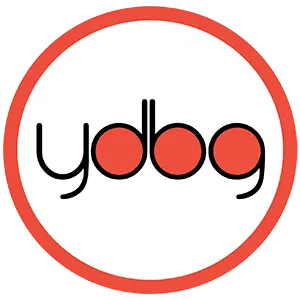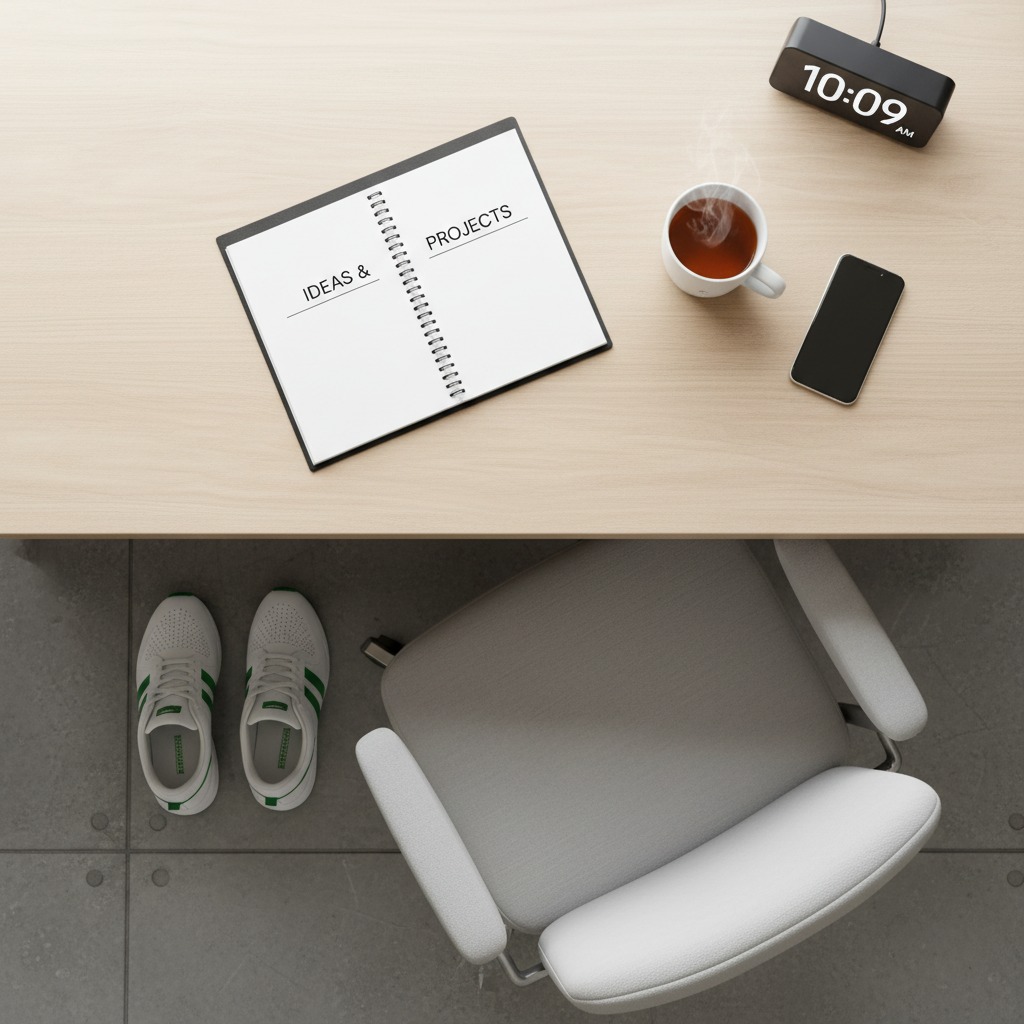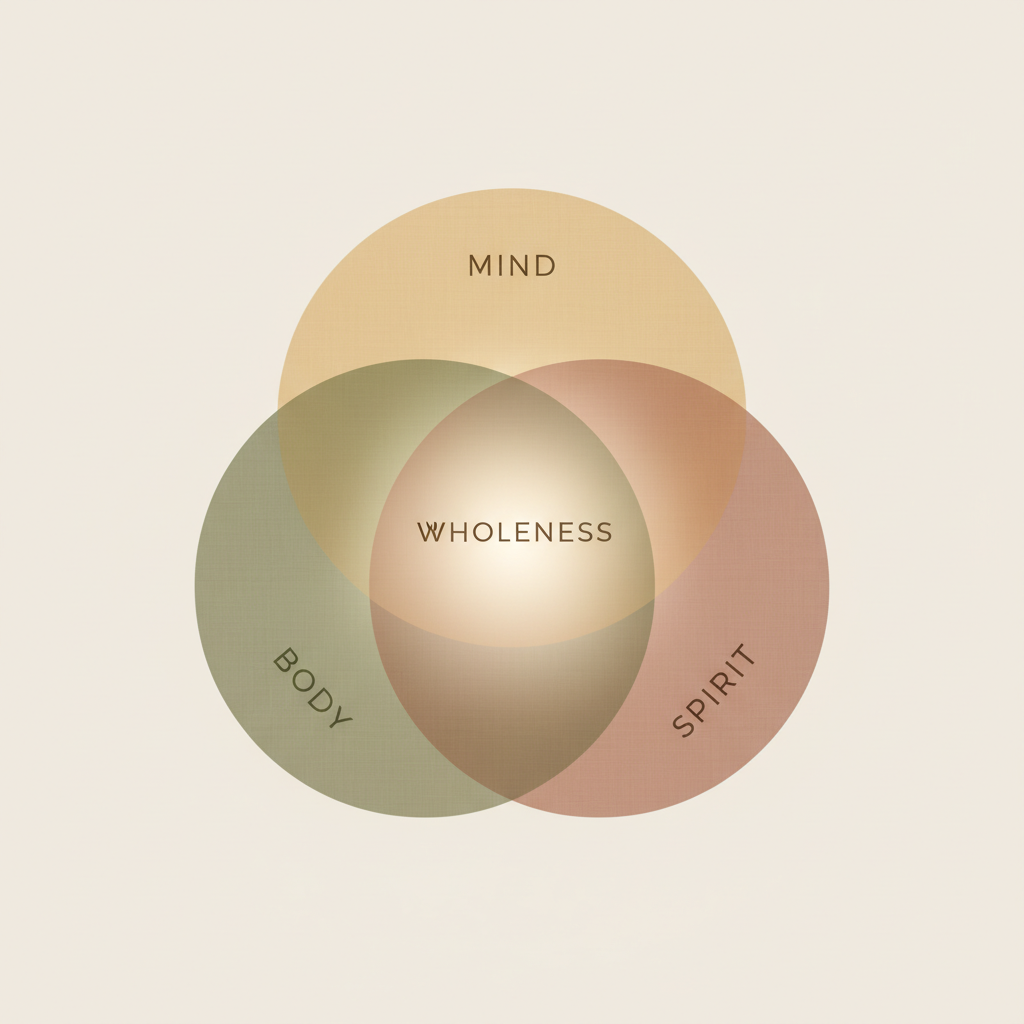Self-trust isn’t a feeling you chase. It’s a result you build. You make deposits by keeping small promises to yourself across your fitness, lifestyle, and consciousness. Do that consistently and your life gets easier, not because the world changes, but because you can finally rely on the one person you take everywhere—yourself.
This is a practical guide to activate and integrate habits so self-trust becomes your default. Real talk. No fluff. We’ll use a principle-centered playbook grounded in three truths:
- Health supports life.
- Balance is the goal.
- Every day is Game Day.
You’ll get a clean process, concrete examples, and a 30/90-day plan. Let’s get to work.
Why Self-Trust Comes First
Most people try to change their bodies or calendars without changing their agreements with themselves. They stack goals, white-knuckle routines, and then blame motivation when it falls apart. That’s backwards. Self-trust is the engine. Habits are the belts and pulleys. When you can rely on yourself to do what you say, your capacity goes up across the board.
In the YDBG model, performance capacity is balanced across three dimensions:
- Fitness (20%): your physical inputs and outputs.
- Lifestyle (30%): your systems, sleep, nutrition, time, and environment.
- Consciousness (50%): your awareness, attention, identity, and meaning-making.
If you’ve tried to “optimize” fitness or productivity without addressing your consciousness—your relationship with yourself—you’ve already felt the ceiling. Self-trust breaks that ceiling.
Activation vs. Integration
Two phases matter.
Activation is the start phase. It’s how you turn a practice into a habit candidate. Think “decide + design + do.” You’re choosing the smallest viable promise, shaping the environment, and executing reps.
Integration is the stability phase. It’s how a candidate becomes a reliable identity-level behavior. Think “repeat + refine + reinforce.” You build consistency, troubleshoot friction, and anchor the habit to principles instead of preference or circumstance.
Activation builds early wins. Integration makes them permanent.
Principle-Centered Is Non-Negotiable
Values can be hijacked by outside expectations and codependent patterns. Principles keep you honest. Principle-centered living means your habits are aligned with universal truths (health supports life, balance is the goal) and your lived priorities, not external approval. That’s your guardrail against over-committing for the wrong reasons and resenting the work later.
A Simple Equation for Self-Trust
Self-trust = (Promises Kept) / (Promises Made)
If that ratio is low, you’re making either the wrong promises or too many of them. Fix the math.
The Activation Blueprint: Four Steps
- Decide your non-negotiables and minimum effective dose
- Choose one habit per dimension: Fitness, Lifestyle, Consciousness.
- Make each habit so small it survives bad days. This is your minimum effective dose (MED).
- Define the smallest clear win:
- Fitness: 5 minutes of mobility after coffee.
- Lifestyle: 10 minutes device-free wind-down before bed.
- Consciousness: 3 minutes of box breathing after you sit at your desk.
Make it obvious, specific, and time-bound. If your habit needs perfect conditions, it’s not a habit—it’s a hope.
- Design the loop and the environment
Habits are context-dependent. Engineer the cue, behavior, and reward.
- Cue: Anchor to a stable trigger (existing routine, time, or place). Example: “After I brush my teeth at night, I open my journal.”
- Behavior: The MED action. No extra flair. No bonus reps yet.
- Reward: Close with a micro-win. Say out loud: “Deposit made.” Or tick a box. Your brain needs to feel completion.
Environment beats willpower:
- Put the foam roller by the coffee machine.
- Place your phone charger in the kitchen, not the bedroom.
- Pre-write your breathwork script on a sticky note where you work: “4 in, 4 hold, 4 out, 4 hold, 8 rounds.”
- Do it with a Game-Day plan
Treat each day like Game Day: clear roles, a playbook, and a debrief.
- Pre-commitment: If-then for foreseeable friction.
- “If I miss my morning mobility, then I do it before lunch.”
- “If I’m traveling, I do breathwork in the airport bathroom stall.”
- Never miss twice: A miss is data. Two misses is a new habit. Break the chain.
- Use RPE (Rate of Perceived Effort): Keep activation habits at RPE 3-4/10. Save RPE 7+ for planned training or projects.
- Pre-commitment: If-then for foreseeable friction.
- Debrief daily and weekly
- Daily micro AAR (After Action Review), 60 seconds:
- What did I keep?
- Why did I wobble?
- What’s my repair for tomorrow?
- Weekly scoreboard:
- Grade each habit 0/1 per day: kept (1) or missed (0). Adjustments still count as kept if they meet MED.
- Self-trust score = kept promises / promises made, per habit and overall.
- If your 7-day score is under 80% for any habit, reduce the MED or tighten the cue. Don’t increase volume until you’re >85% for two weeks.
- Daily micro AAR (After Action Review), 60 seconds:
Integration Protocol: Make It Who You Are
Once your MED hits 85%+ consistency for 3-4 weeks, you’re ready to integrate.
- Progressive overload, not perfection:
- Add 10-20% more only after consistency. From 5 to 6 minutes mobility. From 10 to 12 minutes wind-down. From 3 to 4 minutes breathwork.
- Stabilize through identity:
- Language matters: “I am the kind of person who…” Examples:
- “I am the kind of person who opens and closes my day with presence.”
- “I am the kind of person who protects my sleep.”
- “I am the kind of person who moves my body daily.”
- Language matters: “I am the kind of person who…” Examples:
- Boundary the outside-in:
- Watch codependent reflexes: over-caring, over-committing, rescuing others at your expense.
- Principle filter: “Does this request support health and balance?” If not, it’s a no or a renegotiation.
- Build a repair ritual:
- When you miss, run RRR: Recognize (no shame), Review (what blocked me?), Reset (implement one tweak: earlier cue, smaller dose, clearer location).
- Consolidate via context:
- Keep the same cue and place. Consistency of context cements the habit faster than variability.
What to Practice Across the Three Dimensions
Fitness (20%)
Goal: Build a resilient, energetic body that supports life.
- Activation options:
- Daily Mobility 5: five minutes of joint work after coffee.
- Steps Baseline: 5-minute walk after lunch, every day.
- Strength Starter: One compound set (e.g., 1 set of goblet squats and push-ups) Monday/Wednesday/Friday before shower.
- Environment:
- Leave shoes by the door. Kettlebell visible. Workout clothes pre-laid.
- Measures:
- 5/7 days mobility, 5/7 days walk, 3/7 days strength. RPE logged. No skipped warm-ups.
- Integration:
- Progress to 8-10 minutes mobility, 10-15 minutes walk, 2 sets strength. Keep RPE under 8 unless planned.
Lifestyle (30%)
Goal: Make your systems support your energy, not drain it.
- Activation options:
- Sleep Gate: Screens off 60 minutes before bed, or if that’s too big, start with 10 minutes. Add 5 minutes per week.
- Food Baseline: Protein + plants at the first meal. Add water before caffeine.
- Time Guard: Calendar 1 Focus Block (25 minutes) before checking email.
- Environment:
- Nightstand book where your phone used to be. Protein options prepped. Browser home page set to a blank tab.
- Measures:
- Lights-out window, morning energy 1-5 scale, daily protein target hit or not, focus block completed Y/N.
- Integration:
- Stabilize a 3-part evening routine: tidy + stretch + read. Stabilize weekly food prep. Carve recurring focus blocks at the same time each weekday.
Consciousness (50%)
Goal: Direct your attention and meaning-making. This is the lever for self-trust.
- Activation options:
- Presence Reps: 3 minutes of box breathing when you sit at your desk.
- The 3-3 Check-In: 3 breaths + name 3 sensations + ask “What matters now?”
- Micro-Journal: One sentence each night: “Did I keep my promises? Why or why not?”
- Environment:
- Sticky note prompts where you work. Journal and pen on your pillow in the morning so you move it at night.
- Measures:
- Daily presence reps Y/N. Nightly sentence Y/N. Morning clarity 1-5.
- Integration:
- Grow to 5-7 minutes meditation. Add weekly 20-minute reflection: review your scoreboard, renew your principles, plan repairs.
The Self-Trust Ledger
Turn this into a visible system.
- Deposits: Kept MED habits, on-time start, honest no’s, aligned decisions.
- Withdrawals: Overpromising, skipping without repair, people-pleasing that violates your boundaries.
- Weekly review:
- What got the most deposits? What triggered withdrawals?
- Which lever (fitness/lifestyle/consciousness) needs attention to restore balance?
Game-Day Mindset: How to Show Up
- Pre-brief each morning:
- What are my three promises today (one per dimension)?
- What is the earliest cue for each?
- What friction might show up? What’s my if-then plan?
- Post-game each evening:
- Did I play my plays? What’s one tweak for tomorrow?
- Name one win out loud. Lock it in.
Common Traps and Clean Exits
- All-or-nothing thinking:
- Exit: MED always counts. You can do less; you cannot do nothing.
- Over-optimization at the start:
- Exit: Simplicity scales. Fancy fails.
- Tracking fatigue:
- Exit: Use a wall calendar or a simple notes app. One checkbox per habit. Done.
- Social sabotage:
- Exit: Pre-announce your boundaries: “I leave by 10 pm.” “I don’t check Slack before 10 am.” Your life, your rules.
- Shame spirals:
- Exit: Shame is a distraction dressed as morality. Return to RRR (Recognize, Review, Reset) and make the next deposit.
Day Activation Plan
- Week 1: Select and Set
- Choose one habit per dimension. Define MED.
- Set cues and environment.
- Write your if-then traps for top two frictions per habit.
- Run three practice reps of each habit before “official” start. Reps beat theory.
- Week 2: Execute and Record
- Protect your cues with alarms or visual anchors.
- Track daily 0/1 for each habit. Keep notes on friction.
- Aim for 80% consistency. Do not increase volume.
- Week 3: Stress Test and Repair
- Expect disruptions. Travel, late meetings, low mood—it’s normal.
- Use your if-then plans. Apply RRR within 24 hours of a miss.
- Hold the MED. If you miss twice in a row, your MED is still too big. Cut it by 50%.
- Week 4: Consolidate and Celebrate
- Keep consistency above 85%.
- Review your scoreboard. Identify your easiest and hardest habit.
- Choose one habit to progress by 10-20% next month. Leave the others at MED for stability.
- Celebrate the system, not the outcomes. You’re building the person who can produce outcomes on demand.
Day Integration Plan
- Month 1: Consistency
- Lock in 85-90% adherence at MED.
- Build the pre-brief/post-game rhythm.
- Clean up environment friction.
- Month 2: Capacity
- Progress one habit per dimension by 10-20%.
- Add one weekly reflection block (20 minutes) to evaluate deposits/withdrawals and adjust.
- Tighten boundaries that cost you sleep, food quality, or presence.
- Month 3: Identity
- Write your principle-centered identity statements and read them daily.
- Teach your system to someone else. Teaching reinforces identity and clarity.
- Set a new 90-day horizon with one stretch target that still respects balance.
Yes/No Filter for Every New Habit
- Does this habit support health?
- Does it preserve or restore balance?
- Can I execute it on my worst day?
If it fails any question, it’s not ready. Shrink it, shift it, or shelve it.
What “Trust” Feels Like Day-to-Day
- You stop negotiating with yourself over basics.
- A missed day doesn’t trigger a story—just a repair.
- You have more honest conversations because you’re not burning energy hiding your own inconsistency.
- Your body feels safer; your mind gets quieter. That’s not magic—it’s nervous system predictability born from kept promises.
From Codependency to Sovereignty
If you’re used to prioritizing everyone else’s emergencies over your essentials, your habits will keep collapsing. That’s not a discipline problem; it’s an orientation problem. Move from outside-in (performing for values you didn’t choose) to inside-out (operating from principles). Boundaries aren’t selfish. They’re how you protect the engine that makes your contribution possible.
A One-Page Playbook You Can Start Today
- Pick three MED habits (one per dimension).
- Set cues:
- Fitness: After coffee, Mobility 5.
- Lifestyle: 10 minutes device-free before bed.
- Consciousness: 3-minute box breathing when you sit at your desk.
- Write if-then repairs:
- If I miss mobility in the morning, then I do it before lunch.
- If I work late, then I still do 3 device-free minutes in bed with the phone outside the room.
- If I forget breathwork, then I do it before my first meeting.
- Track 0/1 daily and review weekly. Aim for 85%+.
- Speak the identity:
- “I am someone who keeps promises to myself.”
Final Word
Self-trust is not a mood. It’s a ledger. Every time you show up for a well-designed, principle-aligned habit, you make a deposit. Every time you over-promise, negotiate away your basics, or chase external approval at the expense of your essentials, you withdraw.
Activate small. Integrate slow. Balance your fitness, lifestyle, and consciousness. Run your day like Game Day: clear plays, clean reps, honest reviews. Health supports life. Balance is the goal. When you live from those principles, self-trust stops being a project and becomes your baseline. Then you don’t have to hype yourself to act—you can just rely on you.







